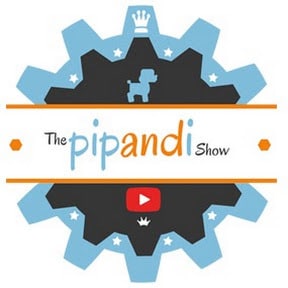Your writing voice is an important part of your company’s brand. From your blog to your social media posts and everything in between, it’s your strong, consistent voice that makes your content so readable.
So what happens when you see that strong, consistent voice elsewhere? Maybe you’re browsing a blog you enjoy and there it is: your words, verbatim, uncredited. You read and reread and your confusion grows. Why weren’t you contacted? Why weren’t you quoted directly? Why is there no hyperlink back to your site?
That’s because you’ve been plagiarized. Although writers typically abide by a moral code to always write unique content, sometimes it’s possible to slip up. In some cases, it’s an honest mistake, which is usually easily fixable. In other instances, though, the other person is copying the content intentionally. That’s when you have a sticky situation.
If you’ve ever had your content stolen before, you’re going to want to protect it, now and in the future. If you’ve yet to experience plagiarism firsthand, these tips are still applicable. By learning more about what plagiarism is, how to find it, and how to solve it, you can worry more about converting customers with your content instead of dealing with copycats.
Understanding Plagiarism
Plagiarism is, to put it simply, copying someone else’s work. This doesn’t just have to be writing, of course. A thief may snatch pictures, website designs, videos, and other media and claim ownership.
Did you know there are various types of plagiarism? Keep these in the back of your mind in case someone ever steals your content.
Accidental plagiarism — Sometimes the person who copies your work didn’t do so maliciously. They didn’t even do it on purpose. They perhaps didn’t use a plagiarism checker before publishing and they happened to have a similar idea to what you already published. Their article thus ends up looking awfully close to yours.
Similarly, accidental plagiarism may occur if the writer meant to quote you or another source and forgot or did so incorrectly. They’re not trying to rip you off, but it happened nonetheless.
Self-plagiarism — Although unrelated to someone else stealing your work, self-plagiarism is something you should think about as you write content for your blog each week. You can indeed plagiarize yourself. Make sure that your thoughts, ideas, and suggestions are unique in each of your posts and you shouldn’t have an issue. If you feel your idea well has run dry, have a group brainstorming session. Guest posts can also give you some time off to better plan content.
Direct or verbatim plagiarism — This is when someone just point-blank copies your work in their content and calls it a day. Direct plagiarism is rarely an accident. When someone directly plagiarizes your work or the work or others, they erode the trust of those writers. They also badly damage their own reputation, sometimes to the point of no return.
Patchwork plagiarism — Patchwork plagiarism is its own animal. Also known as mosaic plagiarism, the thief may not have directly copied from you, but instead they took bits and pieces of your work and combined it with their own unique writing. Your work may or may not be paraphrased, but it’s still yours and it’s still being used against your will. Patchwork plagiarism is harder to detect because of its nature, but it’s not impossible.
Detecting Plagiarism
Whether writing, editing, brainstorming, or marketing, once your content is published, you don’t have time to sit and monitor it. You’re already on to the next project. If someone happened to copy your work, how would you even find out?
Your readers may sometimes notice something seems a little fishy and contact you about the alleged plagiarism. However, you should be diligent in making sure your work stays your own. The best way to do so is to set up an alert online. The Kissmetrics Marketing Blog recommends Google Alerts, which is free and only requires a Gmail account to use.
You can customize your search query on Google Alerts and even create multiple alerts. Kissmetrics recommends copying and pasting your whole article and setting that as a search query.
You then set the source that Google will search. These include discussions and forums, books, videos, websites, news, and blogs. Next, decide how often you want Google sending you alert emails or RSS notifications (daily or weekly) and wait for the results to roll in.
So how do these alerts work? Google combs the Internet as often as you ask it to, seeking out instances of your search query. Then it compiles all instances of said search query into an email that’s sent to you.
Hopefully you never receive such an email. What if you do though?
Make sure you do your research. Copy the offending blog post into a plagiarism checker and compare it against your post. There are plenty of plagiarism-checking tools you can find online. You may already rely on these when writing your own content or they may be new to you. Here are five to get you started.
- Small SEO Tools Plagiarism Checker — Small SEO Tools is a suite of free tools to improve your content. Besides the plagiarism checker, there’s also image compression, website page size checker, backlink makers, and more. To use the plagiarism checker, paste your content in the text box or upload it as a document. Content is rated by percentage, with 100 percent a plagiarism-free document.
- Copyscape — Regarded as one of the best plagiarism detectors, Copyscape searches for duplicate content by URL. Simply paste the plagiarized URL and Copyscape will compare the content against what already exists online.
- PlagScan — A resource for teachers and professional writers alike, you’ll have to copy the offending blog post to a word processing document and then upload it to PlagScan. However, one advantage of PlagScan is how it can compare other content against your own work, so you can quickly prove a case of plagiarism.
- Plagiarisma — Plagiarisma can read content in nearly 200 languages. Again, you can upload the document or paste it in the text box to use this tool. You will have to register to use all the features on Plagiarisma, including checking your content against Google.
- Grammarly Plagiarism Checker — You may already use Grammarly for clearer, crisper content that’s free of grammatical and spelling errors. You may not have known they also have a plagiarism checker. Free to use, Grammarly checks against eight billion sites for instances of copied content. It’s also a proofreader.
Dealing with Plagiarism
Okay, so you’ve received an alert letting you know someone plagiarized your work. You checked their content with one of the plagiarism checkers above and it was a match. Now what?
Contact the offending party. We don’t recommend commenting publicly on their blog. While yes, this is a very big deal and you’re rightfully very upset, you don’t want to damage your own reputation with an emotional outburst. Keep this matter private. Find the writer’s email address and reach out to them that way.
In your email, inform them succinctly that they’ve copied your work. You can include documentation, like a side-by-side of your content and theirs, if you want. Firmly tell them to take down the copied article.
In a perfect world, you’ll hear back right away and the offending party will be apologetic. They’ll delete the copied content and swear to never do it again. You and the other writer can both move on with little damage to either party.
Sometimes though, you won’t hear back. What should you do then?
Google Webmaster Tools Digital Millennium Copyright Act Notice
One of your options is to go through Google Webmaster Tools and send a notice of a Digital Millennium Copyright Act violation. You can do this online. Make sure you have links handy, because Google will ask for samples of the plagiarized content. You also need to be able to authorize the article as your own.
Before you reach out to Google, Kissmetrics cautions to check the rankings of the copied content first. If these are low, it’s not worth it to reach out to Google with a DMCA form. If the ratings are high though, this is your best course of action.
Cease and Desist Letter
Giving the plagiarist a notice to cease and desist is another option. This doesn’t always mean you’re going to get a lawyer and drag the offending party to court, but they don’t know that. A legal letter might finally scare them into taking down the copied content.
Taking Legal Action
If a few weeks have passed and the copied content is still there, even after the party received a cease and desist, it may be time to involve a lawyer. Suing should be regarded as a last resort, because it can be expensive. You’ll have to pay for attorney fees, and you’ll have to miss time from work to appear in court. You’ll also need detailed documentation of the plagiarism incident and proof of content ownership.
Preventing Plagiarism
Perhaps the offending party removed the plagiarized content when you initially asked them to. Maybe you had to contact a lawyer. Regardless, the copied content is now offline. However, you’re nervous about someone else ripping off your writing in the future. How can you prevent plagiarism?
You can’t, at least not entirely. The sad reality is that if someone wants to rip off your content, they will if they’re determined enough. However, you can try a few tactics that could spook them out of stealing your work.
Get Legally Copyrighted
To really cover your bases, you  may go to the U.S. Copyright Office to get your blog or website officially protected from copyright infringement. That said, when you copyright your work, you’re not doing it for free. For each post, expect to pay about $50 as of this writing.
may go to the U.S. Copyright Office to get your blog or website officially protected from copyright infringement. That said, when you copyright your work, you’re not doing it for free. For each post, expect to pay about $50 as of this writing.
Only you can decide if it’s worth that money to protect your work from would-be plagiarists.
Then Post a Copyright on Your Site
The one major perk of paying for legal copyrights on your content is that you can add a copyright notice to these posts. Will these prevent all plagiarism? No. Will they make some plagiarists second-guess if it’s worth it to steal your content? Yes. For that alone, you should consider this option.
Keep Your Content Specific
The less generalized your content is, the more of a hassle it is to steal. After all, that would mean a plagiarist would have to go back and change the content so it fits their purposes. While that’s still patchwork plagiarism, the extra effort required might deter some thieves.
That doesn’t mean you should completely change your writing style to prevent plagiarists. Someone could steal even the most tailored content. Just try to write less generally (when applicable, of course!) in your established voice.
Consider Charging for Full Posts
Another way to keep plagiarists at bay is to make readers pay for your content. However, this can be alienating to some, especially if you’ve always offered your content for free. Consider this as a last resort only. Plagiarists aren’t likely to pay for content. Instead, they’ll move on and find similar posts for free.
Takeaways
If you’re a writer, you know plagiarism happens. While you’re always careful to quote and cite sources in your own content, others may not have the same courtesy. They may steal parts of your blog posts or they may just copy and paste the whole thing.
Realizing someone plagiarized your work can be very emotionally unsettling. You’ll likely feel angry, confused, and upset. Take a minute to calm down and then weigh your options. You can reach out to the plagiarist and hope they’ll take down the content themselves. If not, you can get Google or a lawyer involved to delete the post. Copyrighting your content is a good defense against some plagiarists, but it won’t stop all of them.
This situation doesn’t have to be a blemish on your career. Your audience will understand and support you. The other party is at risk of assassinating their reputation by copying your work.
Overall, while plagiarism is a threat to always be weary of, if you watch over your blog and keep records of ownership of all your content, you’ll be protected if someone does copy your words and claim them as their own.
[author title="About the Author" style="font-family:lato;"]







